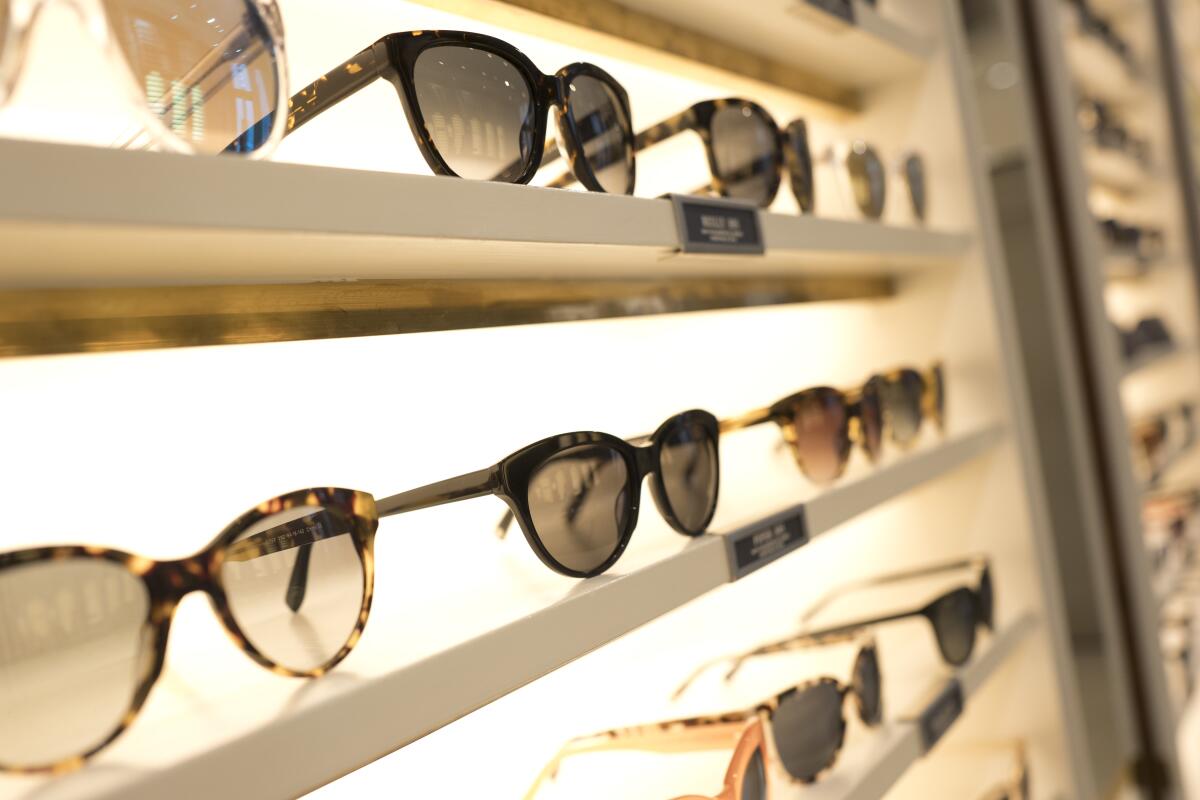Warby Parker’s stock debut gives it a $6.1-billion market value

In the second direct stock listing of the week, eyewear retailer Warby Parker Inc. opened trading at $54.05 a share and held steady, fluctuating barely a dollar from that price.
The shares, which never rose above $54.72 or dipped below $52.96, closed 44 cents above the opening price Wednesday in New York, giving the company a market value of about $6.1 billion.
That was more than double the $24.53 at which shares changed hands in private trades in April, as detailed in Warby Parker’s filings with the U.S. Securities and Exchange Commission. Accounting for stock options and similar holdings, the company’s fully diluted value is more than $6.6 billion.
Before trading began, the New York Stock Exchange assigned the shares a reference price of $40. Unlike the sale price in an initial public offering, the reference price serves merely as a guide for investors and allows trading to begin.
Warby Parker’s debut comes on the heels of data analytics firm Amplitude Inc. rising 9.6% in its direct listing Tuesday.
“It’s like Warby Parker, except ...”
The two were the fifth and sixth major direct listings on U.S. exchanges this year, following the likes of cryptocurrency exchange Coinbase Global Inc. and online game maker Roblox Corp. As with previous direct listings, Warby Parker didn’t issue new shares as it would in a traditional IPO and its investors don’t have to wait for a lockup period to end to sell shares.
Advocates for direct listings contend the option is a better deal for startups and their investors than IPOs, which require underwriting fees and come with expectations of a first-day share-price pop.
Warby Parker counts Tiger Global Management, T. Rowe Price, General Catalyst, D1 Capital Partners and Durable Capital among its largest investors, according to its filings.
The eyewear company got its start as a digital platform and has been expanding its offline footprint. It had a net loss of $7.3 million on revenue of $271 million in the first six months of the year, compared with a net loss of $10 million on revenue of $177 million during the same period in 2020.
While e-commerce accounted for only 8% of eyewear sales in the U.S. last year, the increasing use of smartphones, tablets and computers is contributing to customer growth within the market, Warby Parker said in its filings. Some 76% of adults in the U.S. now use some form of vision correction, according to statistics cited by the company.
It’s a question I get asked frequently, most recently by a colleague who was shocked to find that his new pair of prescription eyeglasses cost about $800.
The company grew during the COVID-19 pandemic, partly through virtual eye exams for prescription renewals.
“We’re super excited about telemedicine,” said Dave Gilboa, who is co-chief executive with Neil Blumenthal. If there’s any silver lining to the pandemic, it was prioritizing telemedicine, Gilboa said in an interview.
Warby Parker is a public benefit corporation, giving it a mandate to focus on more than maximizing shareholder returns. Working with nonprofit organizations, it channels donations of glasses to people in more than 50 countries.
Although banks don’t underwrite shares in a direct listing as they do in an IPO, Goldman Sachs Group Inc., Morgan Stanley and Allen & Co. have been advising Warby Parker on its listing. The shares are trading on the NYSE under the symbol WRBY.
More to Read
Inside the business of entertainment
The Wide Shot brings you news, analysis and insights on everything from streaming wars to production — and what it all means for the future.
You may occasionally receive promotional content from the Los Angeles Times.










